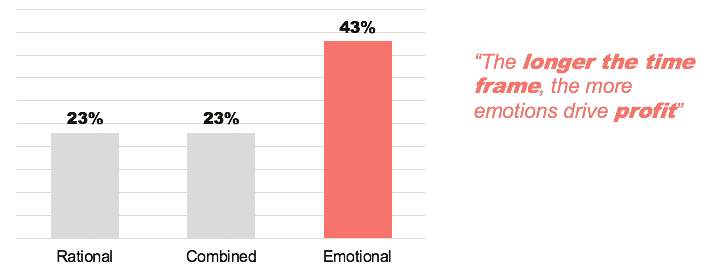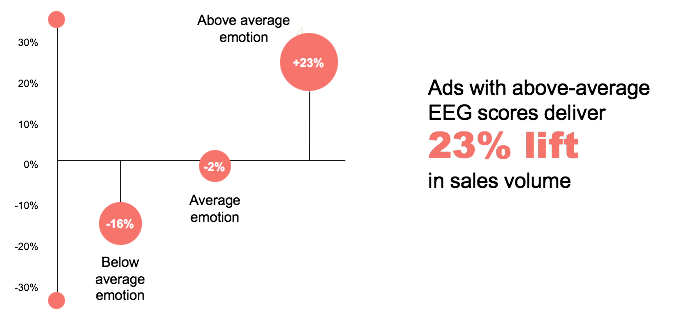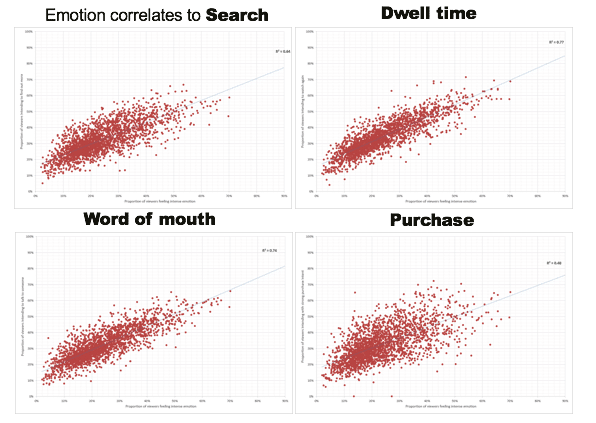Emotional ad campaigns are for life, not just for Christmas!
Emotional ad campaigns create preference, lead to decisions and are about twice as effective as rational advertising. In order to stand out, and leave an impact on consumers, brands are continuing to push boundaries in their advertising.
This week our VP of Insights Becky Waring and our SVP of Data Sam Sherson gave a great talk on the main stage at Tech Retail in London on unlocking emotion in advertising. For those who missed it, we’ve taken some of the highlights from their talk and pulled out the key themes.
Nike and LeBron James
This month Nike released a powerfully emotive ad as part of their ‘Just Do It’ 30th anniversary campaign. The new short film entitled ‘Dream Crazy’ features a number of athletes who are household names. All the athletes have leveraged the power of sport to help move the world forward.
https://www.youtube.com/watch?v=Fq2CvmgoO7I&t=16s
On Labor Day Nike’s ad was launched in the US to huge debate and polarised opinion. This was mainly down to the use of Colin Kaepernick in their ads who controversially refused to stand during the American national anthem before NFL games.
According to Edison Trends, over the bank holiday weekend, online sales in the US for Nike grew an astonishing 31%. This demonstrates the power that emotional ad campaigns continue to have on audiences.
Driving sales with emotional ad campaigns
Using emotion to drive sales is a trend we continue to see across research studies. IPA ran a study around emotional advertising. They found that ‘emotional ad campaigns are more effective and more profitable than rational ad campaigns, even in rational categories’. 31% of emotional ad campaigns reported very large business effects after 1-2 years, compared to 16% for rational ads.
They also found that 43% of emotional ad campaigns reported very large business effects after 3 or more years. This was compared to just 23% for rational campaigns, indicating that ‘the longer the time frame, the more emotions drive profit’.

Nielsen ran a study in 2015 entitled Consumer Neuroscience. They found that ads with above average electroencephalogram scores delivered a 23% lift in sales volume, confirming the idea that emotions drive sales.

At Unruly, we tested thousands of videos and found an overwhelming correlation between emotional ad campaigns and sales.

So how does it all work?
It was the great poet Maya Angelou who said, “People will forget what you said, people will forget what you did. But people will never forget how you made them feel.”
We looked in our video testing database and analysed the UK retail category to uncover some powerful examples of the use of emotional advertising in this sector.
The most emotive retail ad we’ve ever tested in the UK is John Lewis’ ‘Buster the Boxer’ from Christmas 2016. However, with this being such a familiar example, we decided to look at a different emotive ad, ‘Come Home’ by German brand Edeka. Since this ad has been tested in both the UK and Germany, it gave us an opportunity to highlight how cultural differences affect emotional responses across different markets.
The video evoked a strong reaction in both countries. However, emotions ran much higher in Germany where people were more likely to feel surprise and shock. Whereas UK viewers were more likely to feel warmth. Our cultural analysis revealed that Germans have a more “concerned” cultural leaning than the UK. Meaning they worry about the impact that their behaviour has on themselves and others. Therefore the ad’s message of responsibility to others resonated particularly strongly in the ad’s native market.
Using objective frameworks
Without an objective framework like the one we used in our analysis, it can be very hard to know whether you have an accurate understanding of other cultures. This was illustrated at Tech Retail by playing a game with the audience to see if they could identify which markets were being described by the words “hurried, reserved, and restrained” vs “relaxed, uninhibited, and impulsive”. Becky revealed that these two seemingly opposing descriptions were in fact both referring to Americans. The first is how Mexicans see Americans, and the second is how they are perceived by the Japanese!
It became clear when ranking retail ads by emotional impact, that the top end of the chart was totally dominated by Christmas ads. So the analysis was split into “Christmas retail advertising” and “everyday retail advertising”. Outside of Christmas ads, retail advertising was considerably less emotive than the UK market norm. 11% lower than norm, whereas Christmas ads are 34% higher! Crucially, brand metrics like favourability (-17%) and intent to find out more (-7%) were also below par.
Becky and Sam’s closing advice for retailers?
Emotion is for life, not just for Christmas! Commit to an emotional ad strategy that is both long-term and consistent throughout the year. To this and your business will stand out in customers’ minds.
To find out more on how we use emotions to supercharge ad campaigns check out UnrulyEQ or get in touch with one of our team.

